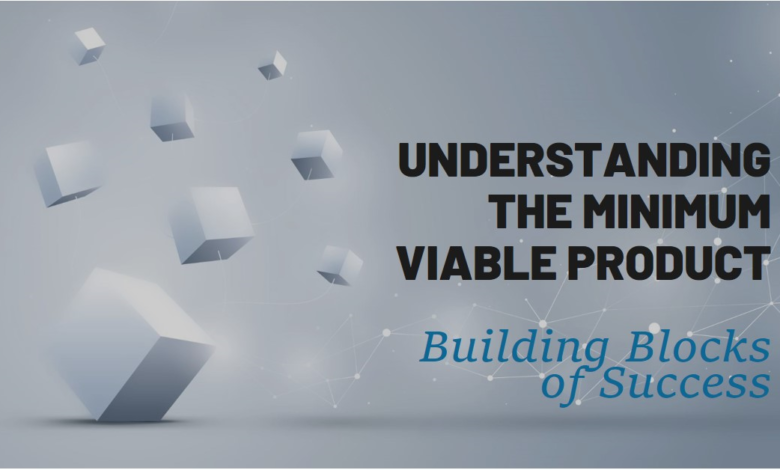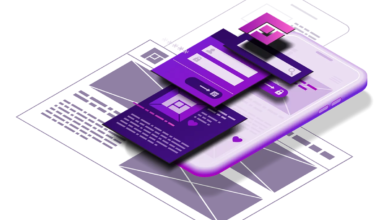
In the realm of product development, success is often built upon a foundation of experimentation, agility, and user-centricity. Among the myriad strategies and methodologies available to modern entrepreneurs and businesses, one concept stands out for its simplicity and effectiveness: the MVP in app development. In this comprehensive guide, we’ll delve into the building blocks of success by unraveling the essence of the MVP in app development approach. From its definition to practical implementation strategies, we’ll explore how embracing the MVP philosophy can propel your venture toward sustainable growth and market success.
Understanding the MVP in app development
At its core, the MVP in app development is a strategy that focuses on releasing a basic version of a product to the market as early as possible. This approach allows entrepreneurs and product teams to gather real-world feedback from users while minimizing resource expenditure. The MVP serves as a testing ground where hypotheses about customer needs, product features, and market demand are validated or invalidated through tangible user interaction. By prioritizing speed and iteration, businesses can swiftly adapt their offerings based on user feedback, ensuring that subsequent iterations are more aligned with customer expectations.
The concept of the MVP in app development gained prominence in the startup ecosystem, particularly through the Lean Startup methodology popularized by Eric Ries. Ries advocated for a build-measure-learn feedback loop, emphasizing the importance of rapid experimentation and validated learning. By treating each product release as an opportunity to test assumptions and gather insights, startups can mitigate the risks associated with traditional product development approaches. Instead of investing significant time and resources in building a fully-featured product from the outset, entrepreneurs can take a more incremental and evidence-based approach to innovation.
Key Components of a MVP in app development
A successful MVP in app development is characterized by its simplicity, focus, and ability to deliver core value to users. While the specific features and functionalities may vary depending on the nature of the product and the target audience, there are several key components that are essential to the MVP framework.
First and foremost is the core value proposition. This is the fundamental benefit that the product offers to its users. In the context of an MVP, it’s crucial to identify the most compelling aspect of the product that addresses a pressing need or pain point for the target audience. By prioritizing the development of features that directly contribute to the core value proposition, teams can avoid unnecessary complexity and ensure that the product resonates with early adopters.
Alongside the core value proposition, the user experience (UX) plays a pivotal role in the success of an MVP. While the product may be minimalistic in terms of features, it should still provide a seamless and intuitive experience for users. This entails careful attention to design, usability, and accessibility, ensuring that the product effectively communicates its value proposition and facilitates user interaction. A well-crafted user experience not only enhances user satisfaction but also encourages engagement and adoption, laying the groundwork for future growth.
Implementing the Minimum Viable Product Strategy
The successful implementation of the MVP in app development strategy requires a combination of strategic planning, iterative development, and continuous feedback loops. To effectively execute an MVP, product teams must adopt a mindset of experimentation and learning, embracing failure as an opportunity for growth. Here are some practical steps to guide you through the process:
- Define Clear Objectives: Begin by clearly defining the objectives of your MVP. What specific hypotheses are you seeking to validate? What are the key metrics that will indicate success? By establishing clear goals and success criteria upfront, you can focus your efforts and measure the impact of your experiments effectively.
- Identify Core Features: Determine the minimum set of features required to deliver the core value proposition of your product. This may involve conducting user research, analyzing market trends, and prioritizing features based on their impact and feasibility. Resist the temptation to include extraneous features that detract from the simplicity and clarity of your MVP.
- Build, Measure, Learn: Once you’ve identified your core features, embark on the development process with a bias toward action. Build a functional prototype or minimal version of your product and release it to a limited group of users. Gather feedback through surveys, interviews, and usage analytics, paying close attention to how users interact with the product and what insights can be gleaned.
- Iterate and Improve: Armed with feedback from your initial release, iterate on your product to address user feedback and refine your hypothesis. This may involve adding new features, tweaking existing functionalities, or pivoting based on unexpected insights. The key is to iterate quickly and continuously, leveraging each iteration as an opportunity to learn and improve.
- Scale and Expand: As you iterate on your MVP and gather more data, you’ll gain a deeper understanding of your target market and user needs. Use this knowledge to inform subsequent iterations and gradually scale your product to reach a broader audience. While the MVP serves as a starting point, it’s important to maintain a mindset of continuous improvement and innovation as you grow.
By following these steps and embracing the principles of the MVP in app development approach, you can accelerate your path to success and build products that resonate with your target audience. Remember, the journey toward success is not always linear, and failure is an inherent part of the learning process. Stay agile, stay curious, and above all, stay committed to delivering value to your users.
Advantages of Embracing the Minimum Viable Product Approach
Beyond its role as a lean and efficient product development strategy, the MVP in app development approach offers a multitude of advantages for entrepreneurs and businesses striving to innovate in a dynamic market landscape.
Market Validation: One of the primary benefits of the MVP approach is its ability to validate market demand and product-market fit early in the development process. By releasing a basic version of the product to real users, businesses can gauge interest, collect feedback, and assess whether there is sufficient demand to justify further investment. This early validation helps mitigate the risk of building a product that fails to resonate with the target audience, saving time and resources in the long run.
Cost Savings: Traditional product development cycles often involve significant upfront investment in design, development, and marketing before the product is even launched. In contrast, the MVP approach emphasizes incremental iteration and feedback-driven development, allowing businesses to minimize initial investment while maximizing learning. By focusing resources on essential features and iterating based on user feedback, businesses can reduce the risk of overspending on unnecessary features or marketing efforts that may not yield the desired results.
Faster Time-to-Market: In today’s fast-paced business environment, speed is often a critical factor in determining success. The MVP approach enables businesses to accelerate their time-to-market by prioritizing the delivery of core value to users without getting bogged down by unnecessary complexities. By releasing early and often, businesses can establish a competitive advantage, capture market share, and iterate based on real-world feedback to stay ahead of the curve.
Iterative Improvement: Central to the MVP philosophy is the concept of iterative improvement. Rather than striving for perfection from the outset, businesses can release a basic version of the product, gather feedback, and incrementally improve based on user insights. This iterative approach allows for continuous learning and adaptation, enabling businesses to stay responsive to changing market dynamics, emerging trends, and evolving user needs. Over time, this cycle of experimentation and refinement can lead to the development of a more robust and customer-centric product.
Challenges and Considerations
While the Minimum Viable Product approach offers numerous benefits, it’s not without its challenges and considerations. It’s essential for businesses to be aware of these potential pitfalls and plan accordingly to maximize the success of their MVP initiatives.
Managing Expectations: One common challenge when adopting the MVP approach is managing stakeholder expectations, particularly among investors, executives, and other key decision-makers. Unlike traditional product development methods that may promise a fully-featured product at launch, the MVP approach emphasizes starting small and iterating based on feedback. It’s crucial to communicate the rationale behind this approach and set realistic expectations about the scope, timeline, and potential outcomes of the MVP initiative.
Balancing Speed and Quality: Another challenge is striking the right balance between speed and quality. While the MVP approach prioritizes rapid iteration and release, businesses must ensure that they don’t sacrifice quality in the pursuit of speed. Maintaining a focus on user experience, reliability, and performance is essential to building trust with users and establishing a solid foundation for future growth. Finding this balance requires careful planning, prioritization, and a commitment to delivering value without cutting corners.
Risk of Premature Scaling: One common pitfall of the MVP approach is the risk of premature scaling. As businesses gather feedback and iterate on their initial product release, there may be a temptation to scale up operations, invest in marketing, or expand into new markets prematurely. However, scaling too quickly without sufficient validation can lead to wasted resources, missed opportunities, and ultimately, failure. It’s important for businesses to remain disciplined and data-driven, scaling incrementally based on evidence of product-market fit and sustainable growth.
User Feedback and Iteration: Finally, collecting and interpreting user feedback effectively is crucial to the success of the MVP approach. While gathering feedback is relatively straightforward, interpreting that feedback and prioritizing actionable insights can be more challenging. Businesses must develop robust feedback mechanisms, such as user surveys, analytics tools, and usability testing, to gather quantitative and qualitative data about user behavior and preferences. This data should then inform decision-making processes, guiding iterative improvements to the product that align with user needs and expectations.
Conclusion
In conclusion, the MVP in app development approach represents a powerful paradigm shift in the world of product development, emphasizing agility, experimentation, and user-centricity. By releasing early, gathering feedback, and iterating based on real-world insights, businesses can accelerate their path to success, mitigate risk, and build products that resonate with their target audience. However, adopting the MVP approach requires careful planning, disciplined execution, and a willingness to embrace uncertainty and failure as part of the learning process. By understanding the principles, advantages, challenges, and considerations associated with the MVP approach, businesses can harness its transformative potential to drive innovation, achieve market validation, and ultimately, succeed in today’s competitive landscape.
Also know 1Digital Landscape of Pest Control Digital Marketing Agency



